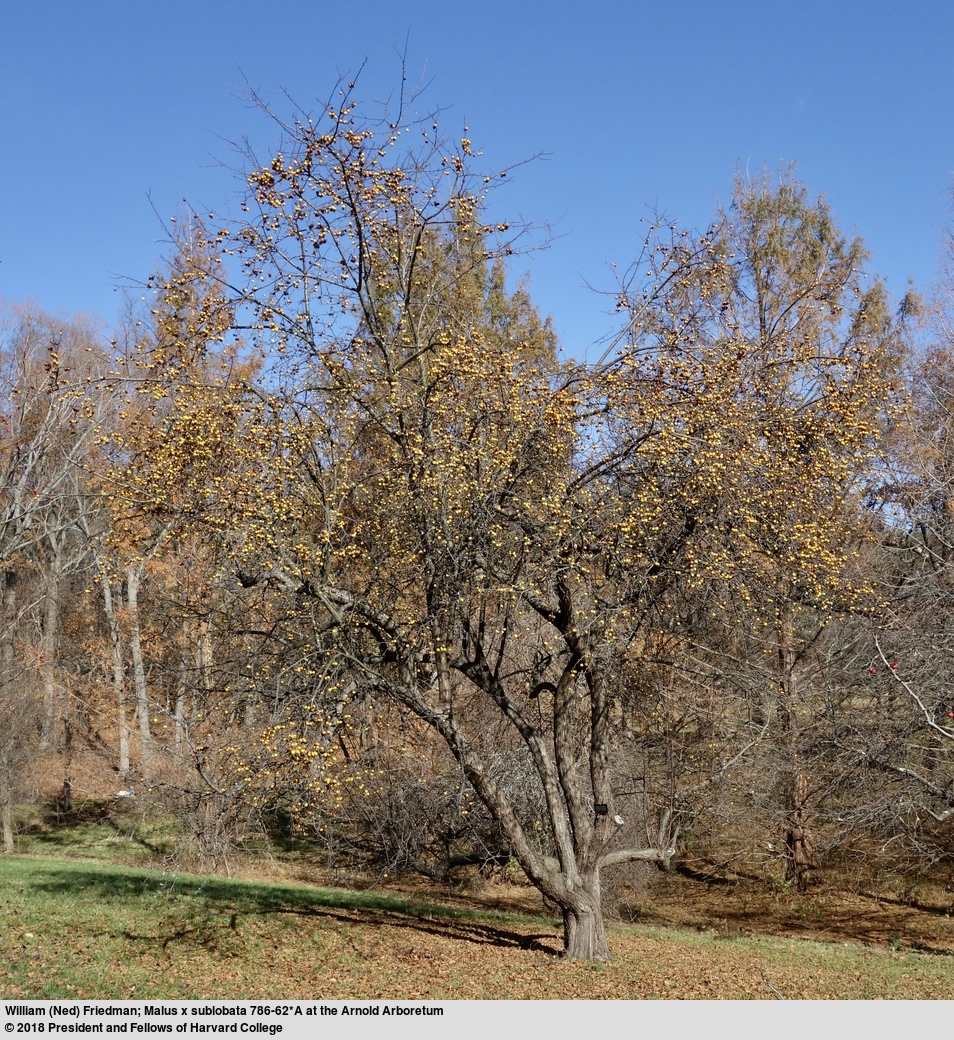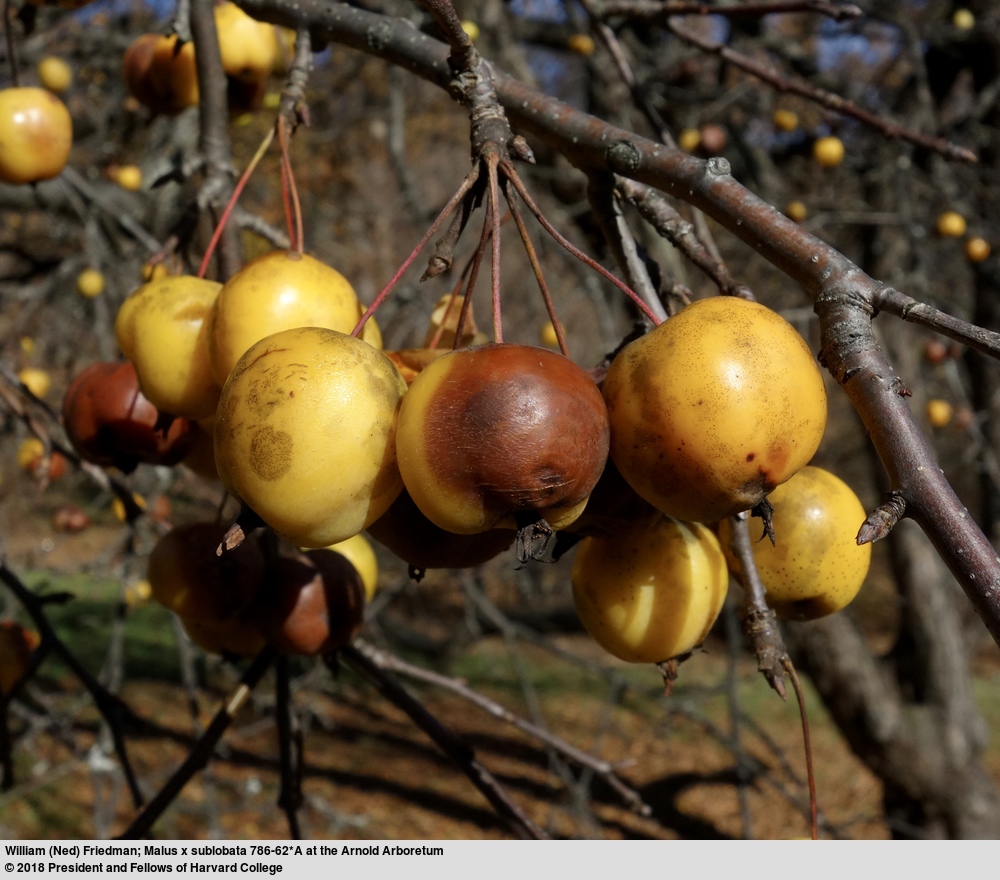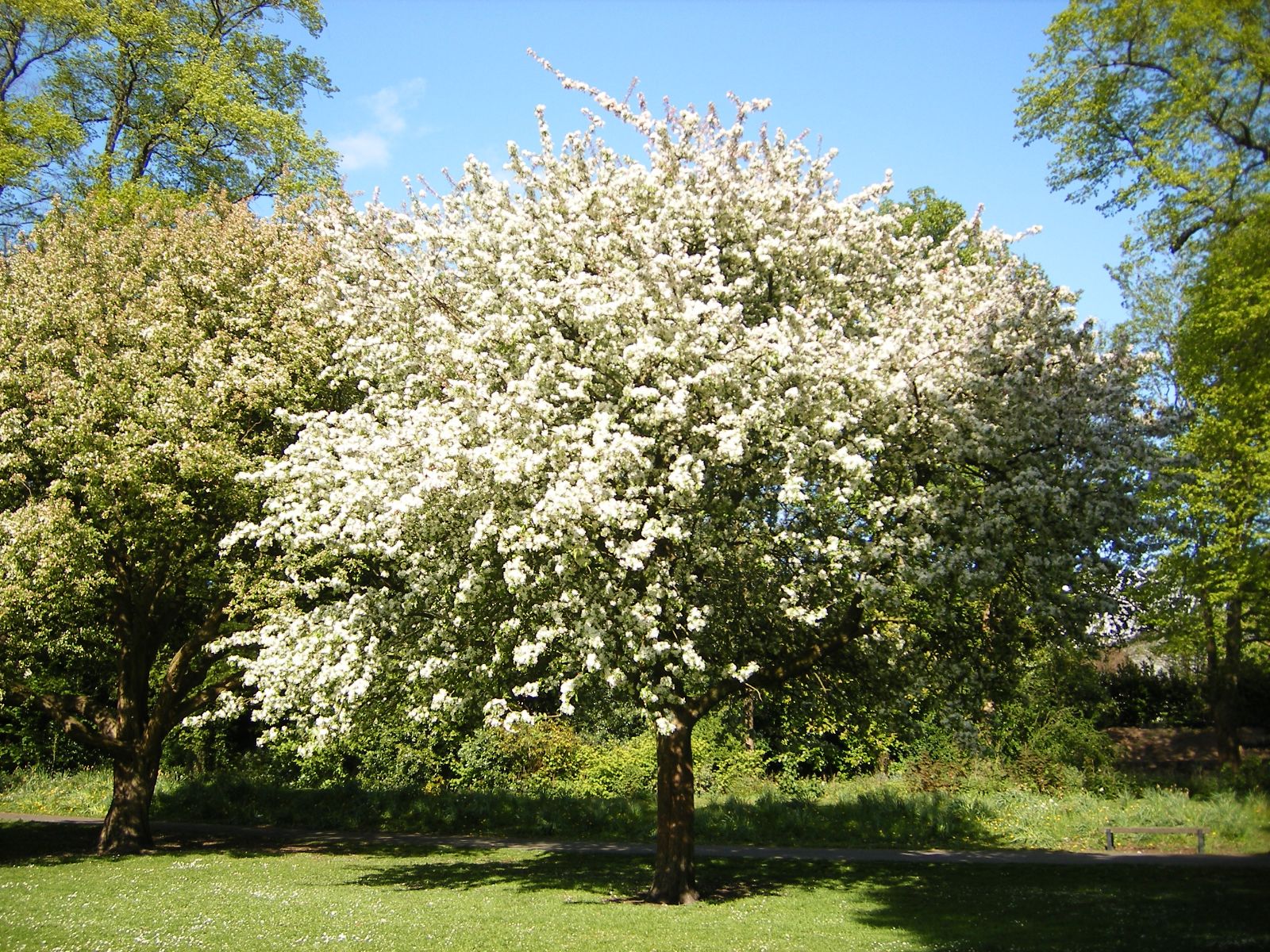Malus × sublobata
Sponsor
Kindly sponsored by
Francine: 'after many informative Tours and Study Days with the IDS I feel it only fitting to help and promote such a wonderful organisation'
Credits
Julian Sutton (species), Nick Dunn (cultivars) (2021)
Recommended citation
Sutton, J. & Dunn, N. (2021), 'Malus × sublobata' from the website Trees and Shrubs Online (treesandshrubsonline.
Genus
Common Names
- Yellow Autumn Crabapple
Other taxa in genus
- Malus × adstringens
- Malus angustifolia
- Malus × arnoldiana
- Malus asiatica
- Malus × astracanica
- Malus × atrosanguinea
- Malus baccata
- Malus bhutanica
- Malus × brevipes
- Malus chitralensis
- Malus coronaria
- Malus crescimannoi
- Malus Cultivars A-B
- Malus Cultivars C
- Malus Cultivars D-F
- Malus Cultivars G-I
- Malus Cultivars J-K
- Malus Cultivars L-M
- Malus Cultivars N-Q
- Malus Cultivars R
- Malus Cultivars S
- Malus Cultivars T-Z
- Malus dasyphylla
- Malus × dawsoniana
- Malus domestica
- Malus doumeri
- Malus florentina
- Malus × floribunda
- Malus fusca
- Malus × gloriosa
- Malus halliana
- Malus × hartwigii
- Malus × heterophylla
- Malus honanensis
- Malus hupehensis
- Malus ioensis
- Malus kansuensis
- Malus kirghisorum
- Malus komarovii
- Malus × magdeburgensis
- Malus × micromalus
- Malus × moerlandsii
- Malus montana
- Malus ombrophila
- Malus orientalis
- Malus × platycarpa
- Malus praecox
- Malus prattii
- Malus prunifolia
- Malus × purpurea
- Malus × robusta
- Malus rockii
- Malus Rootstock Cultivars
- Malus Rosybloom Cultivars
- Malus × scheideckeri
- Malus sieversii
- Malus sikkimensis
- Malus × soulardii
- Malus spectabilis
- Malus spontanea
- Malus sylvestris
- Malus toringo
- Malus transitoria
- Malus trilobata
- Malus tschonoskii
- Malus turkmenorum
- Malus yunnanensis
- Malus × zumi
Small tree to 10 m, usually pyramidal, sometimes round-headed. Leaves narrow-elliptic to elliptic oblong, 3.5–8 cm, sometimes lobed on long shoots, tomentose on both surfaces when young, some hair persisting beneath; petiole 1–4 cm, slender, hairy. Inflorescences 3–6-flowered; petioles 1.5–2.5 cm. Flowers to 4 cm diameter, white or blush from red buds; sepals triangular-lanceolate, ~7 mm, white hairy, mostly persistent; styles 4–5, slightly exceeding the stamens. Fruit subglobose, 1.5–2 cm diameter, yellow, sometimes blushed red or orange. (Rehder 1920; Fiala 1994).
USDA Hardiness Zone 4-8
RHS Hardiness Rating H6
This name covers hybrids of cultivated origin, either in Japan or western gardens, between M. toringo and M. asiatica. An often-repeated alternative, that it represents M. toringo × prunifolia (Fiala 1994; Edwards & Marshall 2019) seems to be an error, probably because Rehder (1920) used the synonym M. prunifolia var. rinki in place of M. asiatica. Making an good sized, pyramidal tree in most clones, its abundant, long-lasting yellow fruit can be very showy, although it is highly susceptible to scab (Fiala 1994; Jacobson 1996).
Rehder (1920) recognized several trees of unknown origin at the Arnold Arboretum, one of them probably raised from Japanese seed obtained by Charles Sargent in 1892, as belonging here, but considered that similar trees were already known in German cultivation, and shared this hybrid origin. Fiala (1994) considered Malus ‘Cashmere’, which arose independently at Aldenham House, Hertfordshire before 1916, to be ‘probably identical’.
It seems never to have had a very wide commercial distribution on either side of the Atlantic, although it was offered by several Midwest nurseries in the 1930s and 40s (Jacobson 1996). In Britain there is a good, round-headed tree in Bute Park, Cardiff (10 m × 131 cm, 2013 – The Tree Register 2020), while in the Netherlands a specimen is recorded at the Belmonte Arboretum (Belmonte Arboretum 2020). Now most uncommon in North America, there are several examples at the Arnold Arboretum, some propagated clonally from trees which were there in Rehder’s day (Arnold Arboretum 2020).



